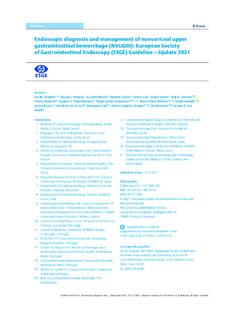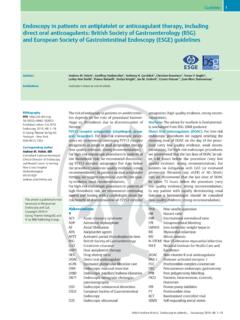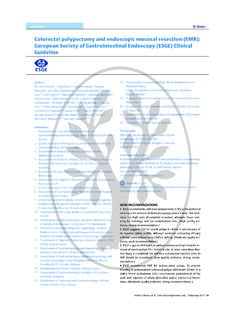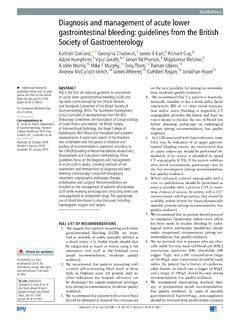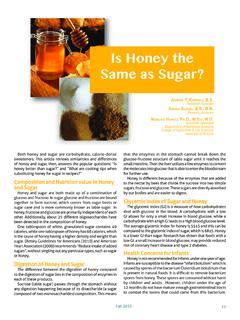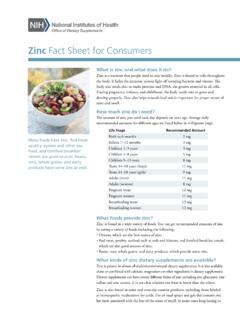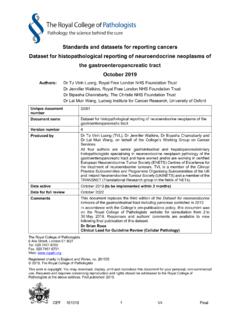Transcription of Pediatric gastrointestinal endoscopy: European Society of ...
1 Pediatric gastrointestinal endoscopy: European Society of Gastro-intestinal Endoscopy (ESGE) and European Society for PaediatricGastroenterology Hepatology and Nutrition (ESPGHAN) GuidelineExecutive summaryAuthorsAndrea Tringali1,*, Mike Thomson2,*, Jean-Marc Dumonceau3,MartaTavares4, Merit M. Tabbers5,RaoulFurlano6, Manon Spaander7,Cesare Hassan8, Christos Tzvinikos9, Hanneke Ijsselstijn10,J r meViala11,LuigiDall Oglio12,MarcBenninga5,RokOrel13,YvanVand enplas4,RadanKeil15, Claudio Romano16, Eva Brownstone17, t p n Hlava15,PatrickGerner18, Werner Dolak19,RosarioLandi1,Wolf Dietrich Huber19, Simon Everett20,AndreasVecsei21,LarsAabakken22 , Jorge Amil-Dias4, Alessandro Zambelli23 Institutions1 Digestive Endoscopy Unit, Catholic University, Rome, Italy2 International Academy for Paediatric Endoscopy Training,Sheffield Children s Hospital, Weston Bank, Sheffield, UK3 Gedyt Endoscopy Center, Buenos Aires, Argentina4 Department of Pediatric Gastroenterology, Centro Hospitalarde S o Jo o, Porto, Portugal5 Department of Pediatric Gastroenterology, Emma Children sHospital, Academic Medical Center, Amsterdam, TheNetherlands6 Department of Pediatric Gastroenterology and Nutrition,University Children s Hospital Basel, Switzerland7 Department of Gastroenterology.
2 Erasmus MC Cancer Institute,Rotterdam, The Netherlands8 Department of Gastroenterology, Nuovo Regina MargheritaHospital, Rome, Italy9 Department of Pediatric Gastroenterology, Alder Hey Children sHospital, Liverpool, UK10 Department of Pediatric Surgery and Intensive Care, ErasmusMC, Sophia Children s Hospital, Rotterdam, The Netherlands11 Department of Pediatric Gastroenterology, Robert-Debr Hospital, Paris, France12 Digestive Endoscopy and Surgery Unit, Bambino Ges Children s Hospital-IRCCS, Rome, Italy13 Department of Gastroenterology, Hepatology and Nutrition,University Children s Hospital Ljubljana, Slovenia14 Pediatric Gastroenterology, UZ Brussel, Vrije UniversiteitBrussel, Brussels, Belgium15 Department of Gastroenterology, Motol University Hospital,Prague, Czech Republic16 Department of Pediatrics, University of Messina, Italy17 IV Medical Department, Rudofstiftung Hospital, Vienna,Austria18 Department of General Pediatrics, Children s Hospital FreiburgUniversity, Freiburg, Germany19 Division of Gastroenterology and Hepatology, Department ofInternal Medicine III, Medical University of Vienna, Vienna,Austria20 Department of Gastroenterology, Leeds Teaching HospitalsNHST rust,Leeds,UK21 Department for Pediatric Nephrology and Gastroenterology,Medical University of Vienna, Austria22 GI Endoscopy Unit, OUS, Rikshospitalet University Hospital,Oslo, Norway23 Gastroenterology and Digestive Endoscopy Unit, OspedaleNuovo Robbiani di Soresina, online: | Endoscopy 2017; 49: 83 91 Georg Thieme Verlag KG Stuttgart New YorkISSN 0013-726 XThis Executive summary and the full Guideline are publishedsimultaneously in Endoscopy and the Journal of PediatricGastroenterology and Nutrition, respectively.
3 Copyright 2016 Georg Thieme Verlag KG and Wolters authorAndrea Tringali, MD PhD, Digestive Endoscopy Unit, CatholicUniversity, Largo A. Gemelli 8, 00168 Rome, Italy,Fax: Executive summary of the Guideline on Pediatric gastrointesti-nal endoscopy from the European Society of gastrointestinal Endos-copy (ESGE) and the European Society for Paediatric Gastroenterol-ogy Hepatology and Nutrition (ESPGHAN) refers to infants, children,and adolescents aged 0 18 years. The areas covered include: indi-cations for diagnostic and therapeutic esophagogastroduodeno-scopy and ileocolonoscopy; endoscopy for foreign body ingestion;endoscopic management of corrosive ingestion and stricture/ste-nosis; upper and lower gastrointestinal bleeding; endoscopic retro-grade cholangiopancreatography, and endoscopic endoscopic gastrostomy and endoscopy specific toinflammatory bowel disease (IBD) have been dealt with in otherGuidelines and are therefore not mentioned in this Guideline. Train-ing and ongoing skill maintenance will be addressed in an imminentsister *Co-First authorsTringali Andrea et al.
4 Pediatric gastrointestinal endoscopy:..Endoscopy 2017; 49: 83 9183 Ele ktronischer Sonderdr uck zur pers nlichen Ver wendung Time definitionsEmergent/emergency <2 hoursUrgent/urgently <12 hours or <24 hours and defined in textEarly <48 hours but may be at clinician s discretionIntroductionGastrointestinal (GI) endoscopy in the Pediatric population hasevolved during the last 30 years with an increasing number ofdiagnostic and therapeutic applications. Technological im-provements in endoscope design and endoscopic devices havecontributed to the evolution of Pediatric in the Pediatric population has generally, to date,been performed by both non- Pediatric endoscopists in con-junction with pediatricians andby Pediatric endoscopists inspecialized document is the Executive summary of the Guideline onpediatric GI endoscopy [1] commissioned by the European So-ciety for Paediatric Gastroenterology Hepatology and Nutrition(ESPGHAN) and the European Society of gastrointestinal En-doscopy (ESGE).
5 The aims of the evidence-based and consen-sus-based Guideline are to provide a comprehensive review ofthe clinical indications and timing of diagnostic and therapeuticendoscopy in Pediatric patients. It is not meant to be a compre-hensive overview of a patient s care, and investigation/therapyfor each area will, of course, involve the clinician s discretion re-garding the place of endoscopy in overall management, en-compassing, as it must, complementary non-endoscopic ap-proaches. The role of endoscopy in the overall managementwill depend on a number of factors, including but not limitedto the specific clinical features, the availability/appropriatenessof non-endoscopic approaches, and the available skills of theendoscopist. This Guideline tries to address this issue of endos-copist skills, and certainly the upcoming ESPGHAN/ESGE Guide-line on training in Pediatric endoscopy will help in this , where, and when endoscopy may be employed in pedia-tric management is particularly important in the areas of GIbleeding and endoscopic retrograde cholangiopancreatogra-phy/endoscopic ultrasound (ERCP/EUS).
6 This undertaking is the first joint endoscopy review betweenpediatric and adult endoscopy representative groups in aspiration is that this Guideline may lead to a degree ofstandardization in the utility and practice of endoscopic ap-proaches for children, thereby contributing to excellence andappropriateness of endoscopic gastrostomy and endoscopyspecific to inflammatory bowel disease (IBD) have been dealtwith in other Guidelines [2 4], and are therefore not men-tioned in the Pediatric GI endoscopy Guideline. Training and on-going skill maintenance will be addressed in an imminent and ESPGHAN agreed to develop a joint guideline. Twoguideline leaders ( for ESGE and for ESPGHAN) invitedthe listed authors to participate in the project. The key ques-tions were prepared by the coordinating team ( , , , , , ) and then approved by the other mem-bers. The coordinating team established task force subgroups,each with its own leader, and assigned the following key topicsamong the task forces: esophagogastroduodenoscopy (EGD)and ileocolonoscopy; foreign bodies; corrosive ingestion; cor-rosive ingestion and esophageal strictures/stenoses; GI bleed-ing; endoscopic retrograde cholangiopancreatography (ERCP);and endoscopic ultrasonography (EUS).
7 Each task force per-formed a systematic literature search to prepare evidence-based and well-balanced statements on their assigned keyquestions. Searches were performed in PubMed and/or EMBASEand/or Cochrane (publication date from 2000 to May 2015, orbefore if strictly needed), including as a minimum the keywords Pediatric and endoscopy. All articles studying the ap-plication of diagnostic and therapeutic endoscopy in the pedia-tric age range were selected by title or abstract. The results ofthe relevant publications were summarized in literature tablesand graded by the level of evidence and strength of recommen-dation according to the Grading of Recommendations Assess-ment, Development and Evaluation (GRADE) system [5,6].Each task force proposed statements on their assigned keyquestions which were discussed and voted on during the plen-ary meeting held in February 2015 in Munich. In November2015, a draft prepared by , and was sent to allgroup members. After agreement from all the authors on a fi-nal version, the manuscript was reviewed by two members ofthe ESGE Governing Board, ESGE individual members and theESPGHAN manuscript was then submitted to theJournal of Pedia-tric Gastroenterology and Nutritionfor publication in full lengthand toEndoscopyfor publication of the Executive acute upper gastrointestinal bleedingCTcomputed tomographyEGDesophagogastroduodenoscopyE RCP endoscopic retrograde cholangiopancreato-graphyESGEE uropean Society of gastrointestinal EndoscopyESPGHAN European Society for Paediatric GastroenterologyHepatology and NutritionEBUS endobronchial ultrasoundEUSendoscopic ultrasonographyFCSEMS fully covered self-expandable metal stentGIgastrointestinalGRADE Grading of Recommendations Assessment.
8 Development and EvaluationGVHD graft-versus-host diseaseIBDinflammatory bowel diseaseMMCmitomycin CNSAID non-steroidal anti-inflammatory drugRCTrandomizedcontrolledtrialTACtriam cinolone acetonide84 Tringali Andrea et al. Pediatric gastrointestinal endoscopy:..Endoscopy 2017; 49: 83 91 GuidelineEle ktronischer Sonderdr uck zur pers nlichen Ver wendung Both the Guideline and Executive summary were issued in2016 and will be considered for review and update in 2021 orsooner if new and relevant evidence becomes available. Any up-dates to the Guideline or Executive summary in the interim willbe noted on the ESGE and ESPGHAN websites: and (EGD)ESGE/ESPGHAN suggest diagnostic and therapeutic EGD forthe indications listed in Table1and Table2,respectively.(Weak recommendation, low quality evidence.)ESGE/ESPGHANdo not suggest EGD in the case of uncom-plicated gastroesophageal reflux, functional gastrointestinaldisorders, or for diagnosing perforation. (Weak recommenda-tion, low quality evidence.)
9 ESGE/ESPGHAN suggest routine tissue sampling even in theabsence of visible endoscopic abnormalities in all children un-dergoing EGD. (Weak recommendation, low quality evidence.)ESGE/ESPGHAN suggest using ESPGHAN guidelines (on eo-sinophilic esophagitis,Helicobacter pylori,celiac disease, and in-flammatory bowel disease [IBD]) for precise indications andpreferred sites for biopsy during EGD in children suspected ofaspecificdisease( Table3). (Weak recommendation, lowquality evidence.)ESGE/ESPGHAN suggest performing EGD in children undergeneral anesthesia or, only if general anesthesia is not available,under deep sedation in a carefully monitored environment.(Weak recommendation, low quality evidence.)ESGE/ESPGHAN suggest performing EGD in a child-friendlysetting with appropriate equipment and by an endoscopisttrained in Pediatric gastroenterology. (Weak recommendation,low quality evidence.)ESGE/ESPGHAN suggest that when adult endoscopists per-form Pediatric procedures, collaboration between adult gastro-enterologists and pediatricians is always warranted.
10 (Weak re-commendation, low quality evidence.)ESGE/ESPGHAN suggest that the choice of gastroscope typeshould depend on the child sweightandage( Table4). (Weakrecommendation, low quality evidence.)IleocolonoscopyESGE/ESPGHAN suggest ileocolonoscopy for the diagnosticand therapeutic indications listed in Table5.(Weak recom-mendation, low quality evidence.)ESGE/ESPGHAN suggest against ileocolonoscopy in the caseof toxic megacolon, recent colonic perforation (<28 days), re-cent intestinal resection (<7 days), or functional GI disorders.(Weak recommendation, low quality evidence.)ESGE/ESPGHAN suggest performing ileocolonoscopy in chil-dren under general anesthesia or, only if general anesthesia isnot available, under deep sedation in a carefully monitored en-vironment. (Weak recommendation, low quality evidence.)ESGE/ESPGHAN suggest that ileocolonoscopy should beperformed in a child-friendly setting with appropriate equip-ment and by an endoscopist trained in Pediatric gastroenterol-ogy.

